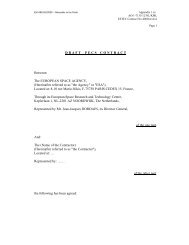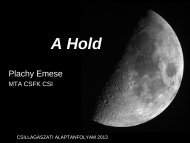Star Forming Regions in Cepheus
Star Forming Regions in Cepheus
Star Forming Regions in Cepheus
Create successful ePaper yourself
Turn your PDF publications into a flip-book with our unique Google optimized e-Paper software.
2<br />
Figure 1. Positions of the major star form<strong>in</strong>g regions of <strong>Cepheus</strong>, overplotted on<br />
a schematic draw<strong>in</strong>g of the constellation.<br />
adopted from Yonekura et al. (1997), were def<strong>in</strong>ed on the basis of their positions, radial<br />
velocities, and distances, where distance data were available.<br />
Table 1 lists the dark clouds identified <strong>in</strong> the <strong>Cepheus</strong> region from Barnard (1927)<br />
to the Tokyo Gakugei University (TGU) Survey (Dobashi et al. 2005), and the molecular<br />
clouds, mostly revealed by the millimeter emission by various isotopes of the carbon<br />
monoxide (Dobashi et al. 1994; Yonekura et al. 1997). The cloud name <strong>in</strong> the first column<br />
is the LDN (Lynds 1962) name where it exists, otherwise the first appearance of<br />
the cloud <strong>in</strong> the literature. Equatorial (J2000) and Galactic coord<strong>in</strong>ates are listed <strong>in</strong><br />
columns (2)–(5), and the area of the cloud <strong>in</strong> square degrees <strong>in</strong> column (6). Column (7)<br />
shows the radial velocity of the cloud with respect to the Local Standard of Rest. The<br />
number of associated young stellar objects is given <strong>in</strong> column (8), and the alternative<br />
names, follow<strong>in</strong>g the system of designations by SIMBAD, are listed <strong>in</strong> column (9). We


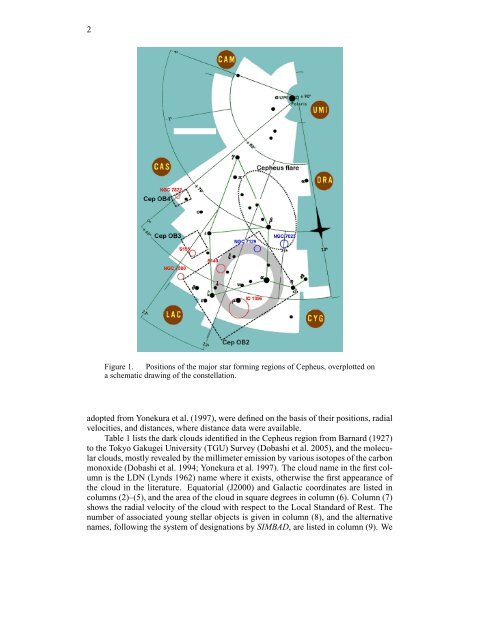


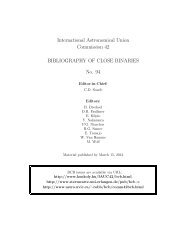

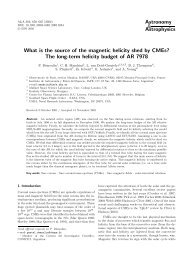


![[001] Kov5acs, G. and VetUo, B. 1979, 'Observations of Two Low ...](https://img.yumpu.com/23925638/1/190x245/001-kov5acs-g-and-vetuo-b-1979-observations-of-two-low-.jpg?quality=85)
